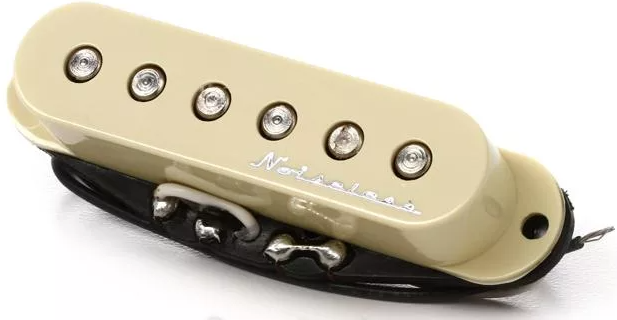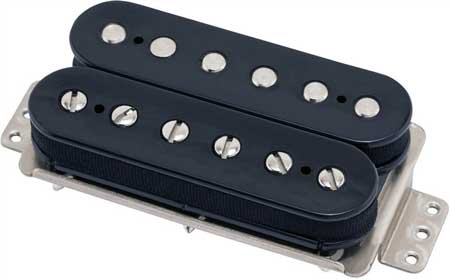

You can hear the '59 Tribute humbucker in the 2014 Les Paul Traditional, a guitar which carries on the legacy of the '50s Les Paul Standard while the ' Les Paul Standard' name is used to carry the Les Paul into the future with modern features like a compound radius fretboard, modern weight relief and more sophisticated electronics. This also gives you greater string separation when playing chords: each note will ring out more clearly, which is great for modern jangly indie styles as well as R&B, blues and classic rock. Yet their lower output level compared to a modern high-output humbucker allows them to clean up nicely when you're running an overdriven amp and you roll the volume controls down. That's what you can expect in the '59 Tribute humbuckers: they have plenty of brightness but without the fuzzy, fizzy high end of higher-output humbuckers, and the more powerful slug coil fills out the power a little more. The tone is generally more punchy and not as thick, almost like a sweet-sounding single coil minus the hum and the twang. By contrast the Alnico II-loaded 59 Tribute humbucker is closer to the lower output of the 50s humbuckers, and if you've ever played a true vintage P.A.F you'd know that the DC Resistance and output on these are relatively low compared to what we expect of modern humbuckers. If you've played the '57 Classic humbucker, you've played a pickup that is inspired by the P.A.Fs of the '50s but with a little more output and control for modern styles. BurstBuckers also use asymmetrical coils, but the 59 Tribute differs in its use of a hotel slug coil rather than a hotter screw coil, meaning that the more powerful part of the pickup's magnetic field is focused a little further from the bridge, giving you a beefier, fuller tone than if the screw coil was hotter. The new '59 Tribute humbuckers pay homage to this characteristic by using unbalanced coils - in other words mismatched or asymmetrical coils - in order to tap into this same sonic mojo. that stands out from the ones made immediately before and afterwards.

It's a big part of what made old P.A.Fs so magical: sometimes just the right two coils happened to be combined in a single pickup and bam - you've suddenly got a P.A.F.

And when you combine two different coils with two different DC Resistances, you'll start to encounter interesting sonic phenomena, like different attack profiles and little frequency bumps here and there. It was common for any given coil to have a few hundred turns more or less than any other coil. In those days the coils that make up the bulk of the pickups were wound using a somewhat imprecise method: the winding was done according to a timer rather than any kind of counter to measure specific turns. And one of the things that made those guitars so magical was their pair of P.A.F.

It's mind-blowing to think just how few sunburst Les Paul Standards were actually made that year (actual figures are hard to come by and the matter is confused by the number of 'conversions' of other Les Pauls to '59-style specs later, but let's just say there aren't thousands of them out there). It was the year that the Les Paul Standard really came into its own. 1959 was an important year for Gibson - and indeed for guitar fans all over.


 0 kommentar(er)
0 kommentar(er)
